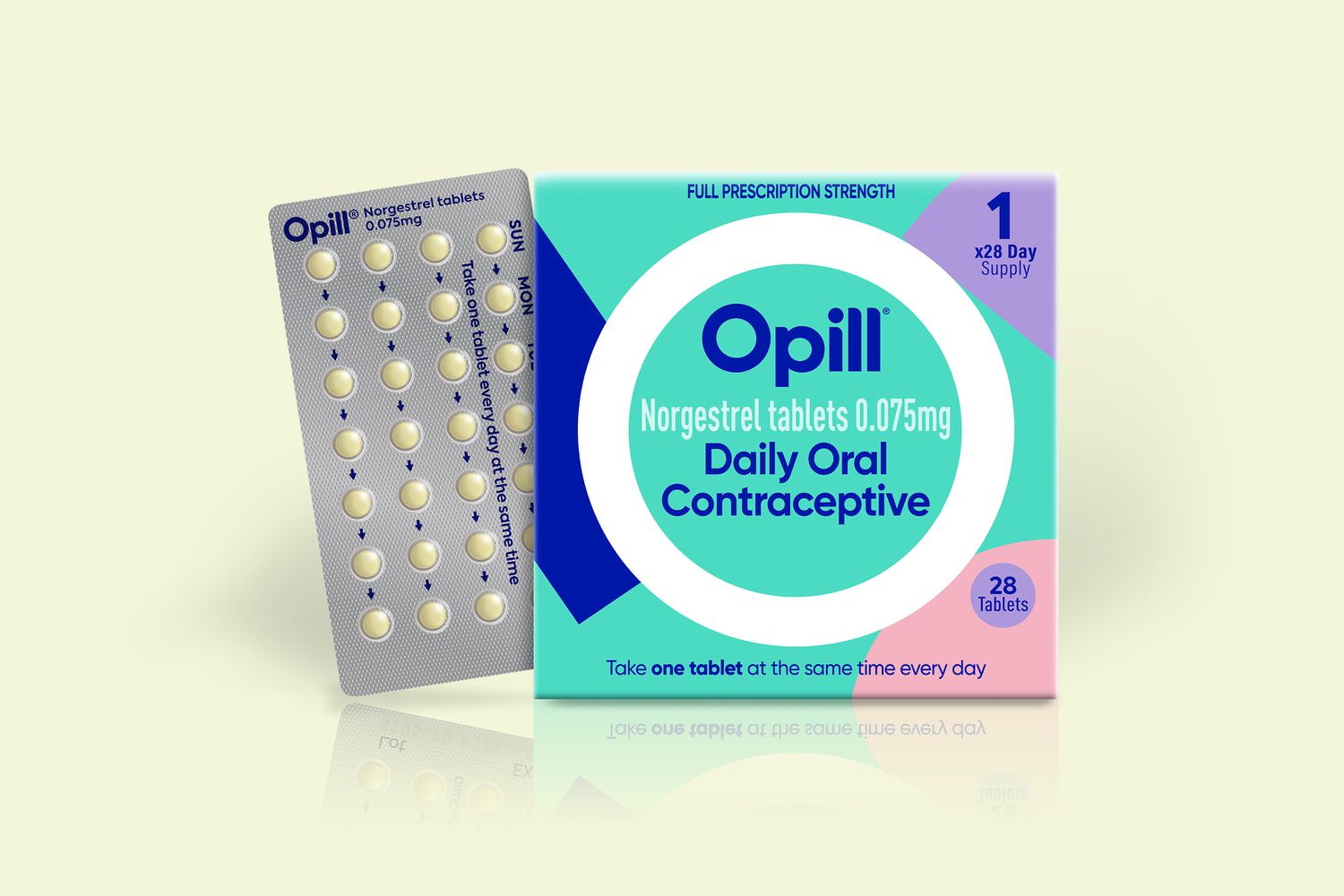Accessibility To Birth Control: The Impact Of Over-the-Counter Options Post-Roe

Table of Contents
Increased Access and Reduced Barriers
The current system of obtaining birth control presents significant barriers for many individuals. Making birth control available over-the-counter could dramatically reduce these obstacles, leading to improved reproductive health outcomes.
Geographic Barriers
Many Americans, particularly those in rural areas and underserved communities, face significant challenges accessing reproductive healthcare services. Long distances to clinics, limited transportation options, and a lack of providers contribute to this disparity. OTC birth control offers a solution:
- Reduced reliance on appointments and travel to distant clinics: Individuals wouldn't need to schedule appointments or travel long distances for a prescription refill.
- Increased convenience, particularly for individuals with transportation limitations: Access becomes significantly easier for those without reliable transportation, including those in rural areas or with disabilities.
- Potential for improved healthcare equity: OTC birth control has the potential to significantly reduce healthcare disparities based on geography. Improved access in underserved communities could lead to a more equitable distribution of reproductive healthcare resources.
Financial Barriers
The cost of birth control, including doctor visits and prescription medications, can be a significant barrier for many individuals and families. Insurance coverage varies widely, leaving many people with substantial out-of-pocket expenses. OTC birth control could alleviate this:
- Lower overall cost compared to prescription methods: The price of OTC birth control is likely to be more affordable, eliminating the costs associated with doctor visits and prescription fees.
- Reduced need for insurance coverage or co-pays: OTC options would bypass insurance requirements, making it more accessible for uninsured or underinsured individuals.
- Potential impact on individuals and families with limited financial resources: This is particularly relevant for low-income individuals and families who struggle to afford prescription birth control.
Time Barriers
Scheduling appointments, waiting for prescriptions, and navigating clinic hours can be significant challenges for individuals with busy schedules or inflexible work arrangements. OTC birth control eliminates these barriers:
- Elimination of appointment scheduling and waiting times: Individuals can obtain birth control whenever they need it, without scheduling constraints.
- Increased convenience for individuals with busy schedules: This is especially crucial for those balancing work, family, and other responsibilities.
- Ability to discreetly obtain birth control: The ability to purchase birth control privately can be particularly important for individuals who prefer not to discuss their reproductive health with others.
Potential Impacts on Reproductive Health Outcomes
Increased access to birth control through OTC availability has the potential to significantly impact reproductive health outcomes:
Increased Contraceptive Use
Improved access generally leads to increased use. OTC birth control could dramatically improve contraceptive use rates:
- Reduction in unintended pregnancies: Easier access to contraception directly correlates to a decrease in unplanned pregnancies.
- Improved family planning: Individuals will have more control over their reproductive lives, empowering them to make informed choices about family planning.
- Positive impact on maternal and child health: Decreased rates of unintended pregnancies contribute to better maternal and child health outcomes.
Reduced Rates of Abortion
Studies consistently show a strong correlation between increased access to contraception and decreased abortion rates. OTC birth control could contribute to this reduction:
- Potential for decreasing abortion rates through proactive family planning: Improved access to contraception allows individuals to prevent unintended pregnancies, reducing the need for abortion.
- Improved reproductive health outcomes overall: This includes fewer complications from unsafe abortions and improved overall health for women.
- Discussion of ethical considerations: While the correlation between contraception and abortion rates is undeniable, ethical considerations surrounding both remain complex and require ongoing discussion.
Public Health Implications
Broader public health benefits extend beyond individual reproductive health:
- Reduced strain on healthcare systems: Fewer unintended pregnancies would translate to decreased demand on healthcare resources.
- Cost savings for individuals, insurers, and the government: The cost savings associated with fewer unintended pregnancies and related healthcare costs are substantial.
- Improved overall population health: This contributes to a healthier and more productive society.
Challenges and Concerns Regarding Over-the-Counter Birth Control
While the benefits of OTC birth control are significant, there are also challenges and concerns that must be addressed:
Safety and Misinformation
Self-medication always carries inherent risks, and access to accurate information is paramount:
- Importance of comprehensive education and readily available resources: Providing clear, concise, and accessible information about different birth control methods and their potential side effects is vital.
- The role of pharmacists in providing guidance and support: Pharmacists can play a crucial role in educating consumers and answering questions about OTC birth control.
- Addressing potential for misuse or incorrect use: Clear guidelines and instructions are essential to ensure safe and effective use of OTC birth control methods.
Regulatory Hurdles and Policy Implications
The path to OTC birth control faces significant regulatory and political hurdles:
- The political landscape surrounding reproductive rights: The political climate significantly impacts the feasibility of implementing policies that expand access to birth control.
- Potential for varying access across states: Depending on state laws and regulations, access to OTC birth control might vary widely across the United States.
- Advocacy and lobbying efforts impacting policy: The role of advocacy groups and lobbying efforts in influencing policy decisions related to reproductive healthcare is crucial.
Conclusion
The accessibility of over-the-counter birth control is a pivotal issue in the post-Roe landscape, with significant implications for reproductive health, healthcare systems, and public health. Increased access to over-the-counter birth control offers potential benefits, including improved convenience, reduced costs, and potentially lower rates of unintended pregnancies. However, addressing concerns regarding safety, misinformation, and regulatory hurdles is crucial for ensuring responsible and effective implementation. Continued advocacy and informed public discourse are essential to achieving equitable access to over-the-counter birth control and ensuring optimal reproductive health outcomes for all. Learn more about the ongoing debate surrounding over-the-counter birth control access and how you can support initiatives promoting greater reproductive health equity.

Featured Posts
-
 The Rock Band That Almost Was Lizzo Sza And A Third Artist
May 04, 2025
The Rock Band That Almost Was Lizzo Sza And A Third Artist
May 04, 2025 -
 Spring Snowfall Forecast 1 2 Inches Possible For Parts Of Nyc Suburbs
May 04, 2025
Spring Snowfall Forecast 1 2 Inches Possible For Parts Of Nyc Suburbs
May 04, 2025 -
 Nuggets Vs Warriors How Nba Fans Reacted To Russell Westbrooks Game
May 04, 2025
Nuggets Vs Warriors How Nba Fans Reacted To Russell Westbrooks Game
May 04, 2025 -
 Final Destination Bloodline Does The Runtime Deliver On The Legacy
May 04, 2025
Final Destination Bloodline Does The Runtime Deliver On The Legacy
May 04, 2025 -
 2025 Kentucky Derby Pace Prediction How Fast Will They Run
May 04, 2025
2025 Kentucky Derby Pace Prediction How Fast Will They Run
May 04, 2025
